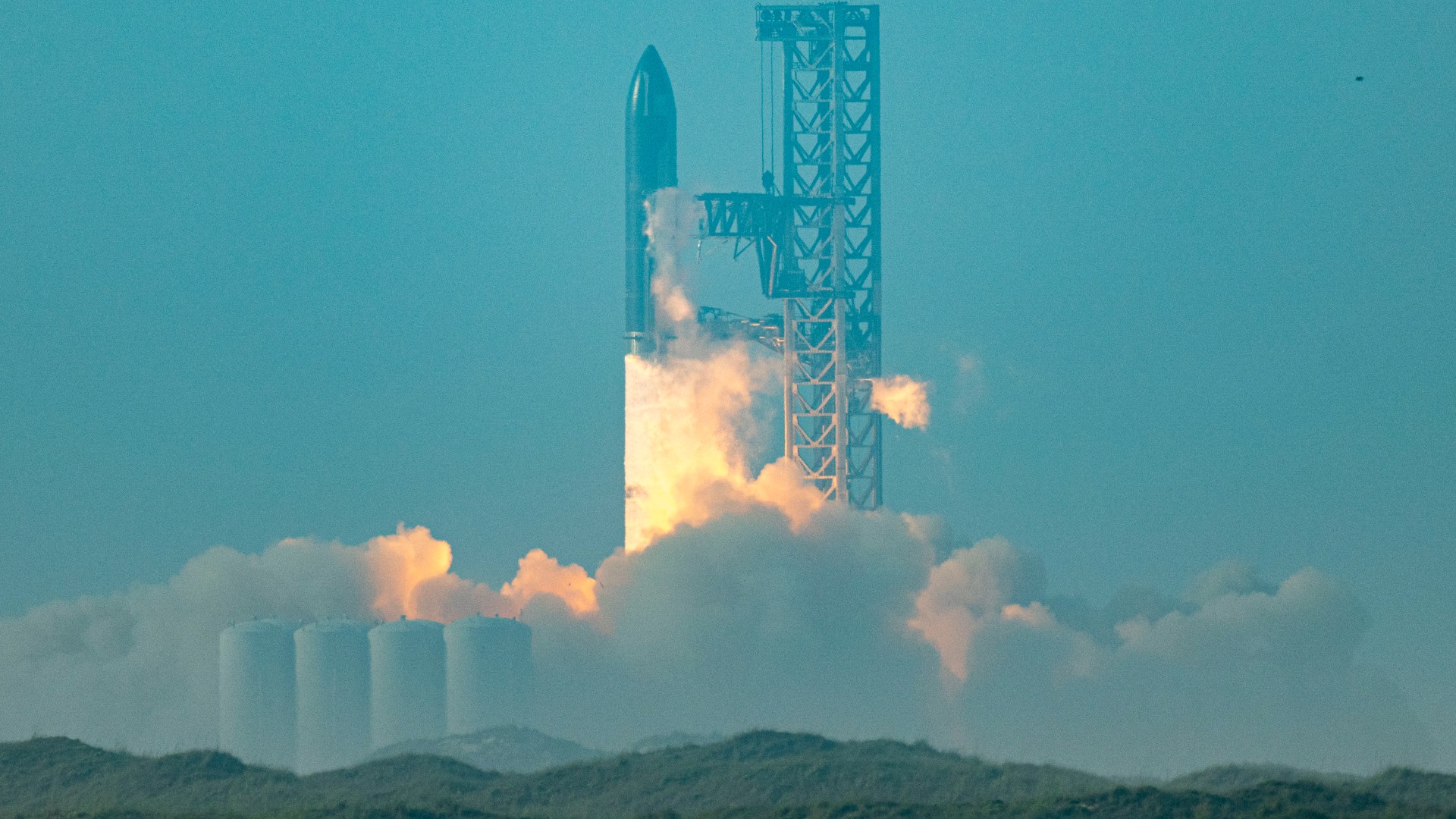
The most powerful rocket ever built did a number on its launch pad last week.
SpaceX's gigantic Starship vehicle lifted off Thursday (April 20) from the company's Starbase facility in South Texas on its first-ever fully stacked test flight.
The 394-foot-tall (120 meters) rocket-spacecraft combo performed relatively well on its debut test flight, reaching a maximum altitude of 24 miles (39 kilometers) before several issues forced SpaceX to order the vehicle's destruction high over the Gulf of Mexico.
But the picture at ground level was a bit grimmer. When the dust cleared at Starbase after the liftoff, a scene of wreckage emerged: Starship's 33 first-stage Raptor engines blew out a crater beneath the orbital launch mount, pummeling nearby infrastructure with flying chunks of cement and other debris.
Related: Relive SpaceX's explosive 1st Starship test flight in these incredible launch photos
Here's a look at the debris-strewn launch pad at SpaceX's Starbase facility in Texas following this morning's Starship test flight.The launch of the world's largest rocket also left a large crater in the concrete under the launch mount.📷: @LabPadre https://t.co/4Qlst35wgT pic.twitter.com/rIS3LVkPTYApril 20, 2023
Starbase's orbital launch mount does not have a flame trench, a structure designed to deflect plume exhaust away from the pad during liftoff.
Flame trenches are common features of pads that host launches of powerful rockets. For example, NASA recently built a new one at Kennedy Space Center's Pad 39B, so the site could support liftoffs of the agency's massive Space Launch System (SLS) megarocket.
SLS flew for the first time last November, launching from Pad 39B to kick off NASA's Artemis 1 moon mission. Hardware at the pad suffered some damage but mostly stood up to the 8.8 million pounds of thrust generated by the SLS at liftoff.
Artemis 1 made SLS the most powerful rocket ever to fly successfully. But Starship's brawn is on another level; its first-stage Raptors produce about 16.5 million pounds of thrust when firing at full capacity. (Several Raptors did not fire as planned on Thursday, so thrust levels on the debut flight were lower than that max level.)
SpaceX considered digging a flame trench at Starbase, which is located next to Boca Chica Beach, but ultimately decided not to.
"Aspiring to have no flame diverter in Boca, but this could turn out to be a mistake," company founder and CEO Elon Musk said via Twitter back in October 2020.
This isn't to imply that Musk is now second-guessing that decision, however. Indeed, he seems to think that the company still has a way forward at Starbase that doesn't involve a flame trench.
On Friday (April 21), Musk tweeted that SpaceX started building a "a massive water-cooled, steel plate to go under the launch mount" three months ago. The plate wasn't ready in time for the debut Starship launch, but SpaceX went ahead with it anyway, figuring that the orbital mount's underlying concrete — a special heat-resistant type called Fondag — could survive one liftoff.
The company based that determination on data from Starship's first full-force "static fire" in February, when the 33 first-stage Raptors were commanded to fire briefly while the vehicle remained anchored to the ground. (Thirty-one of the 33 did so; two failed to ignite.)
3 months ago, we started building a massive water-cooled, steel plate to go under the launch mount. Wasn’t ready in time & we wrongly thought, based on static fire data, that Fondag would make it through 1 launch.Looks like we can be ready to launch again in 1 to 2 months.April 21, 2023
But the February static fire didn't deliver the full power of an actual Starship launch, Musk noted in a tweet on Saturday (April 22).
"Still early in analysis, but the force of the engines when they throttled up [on April 20] may have shattered the concrete, rather than simply eroding it. The engines were only at half thrust for the static fire test," he wrote.
We should know soon enough if the new steel plate will provide adequate protection to the orbital launch mount going forward. In that Friday tweet, Musk said that SpaceX should be ready to try another Starship launch in "1 to 2 months."
Mike Wall is the author of "Out There" (Grand Central Publishing, 2018; illustrated by Karl Tate), a book about the search for alien life. Follow him on Twitter @michaeldwall. Follow us on Twitter @Spacedotcom or Facebook.







